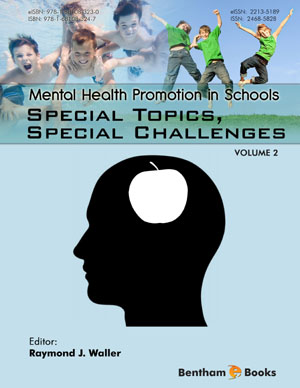Foreword
Page: i-i (1)
Author: Dr. Ciro Rodriguez R.*
DOI: 10.2174/9789815305968124010001
PDF Price: $15
Preface
Page: ii-iii (2)
Author: Veena A* and Gowrishankar S*
DOI: 10.2174/9789815305968124010002
PDF Price: $15
Introduction
Page: 1-22 (22)
Author: Veena A* and Gowrishankar S*
DOI: 10.2174/9789815305968124010003
PDF Price: $15
Abstract
Healthcare analytics indeed plays a crucial role in leveraging data from
various sources to identify trends, patterns, and insights that can lead to improvements
in healthcare delivery and decision-making. Feature selection is particularly important
in healthcare analytics because it helps identify the most relevant data attributes or
features that contribute to predictive models or analysis. By selecting the most
informative features, healthcare professionals can build more accurate models and gain
better insights into patient outcomes, treatment effectiveness, disease prediction, and
more. Challenges in healthcare data include issues related to data quality, privacy
concerns, data integration from disparate sources, and the complexity of healthcare
systems. Overcoming these challenges requires robust analytics techniques and
methodologies tailored to the healthcare domain. Machine learning algorithms play a
significant role in healthcare analytics by enabling predictive modeling, clustering,
classification, and other tasks. Choosing the right algorithm depends on the specific
healthcare application and the nature of the data being analyzed. This chapter outlines
Feature Selection algorithms and discusses the challenges associated with healthcare
data. It also introduces an abstract architecture for data analytics in the healthcare
domain. Furthermore, it compares and categorizes various machine learning algorithms
and techniques according to their applications in healthcare analytics.
Analyzing Healthcare Data to Identify Anomalies and Correlations
Page: 23-50 (28)
Author: Veena A* and Gowrishankar S*
DOI: 10.2174/9789815305968124010004
PDF Price: $15
Abstract
Wearable devices focused on fitness, safety, and data monitoring have
become increasingly common. It is not surprising, given that a sedentary lifestyle can
lead to various health issues such as weight gain, chronic and acute illnesses, and
reduced productivity in daily life. Researchers from both business and academic
settings have delved deeply into monitoring fitness, examining aspects like sleep
patterns, cardiac health, activity levels, overall well-being, and recovery from illness.
They employ a range of techniques including deep learning, machine learning, and
statistical methods to analyze the data collected by these wearables. This study aims to
gather data from Fitbit Inspire HR and Fitbit Versa using the Fitbit API and to
investigate any anomalies, trends, and correlations within the collected healthcare data.
The data is classified using the K-means algorithm based on various parameters of the
Fitbit healthcare data.
Object Detection for Healthcare Data Using Deep Convolutional Neural Networks
Page: 51-85 (35)
Author: Veena A* and Gowrishankar S*
DOI: 10.2174/9789815305968124010005
PDF Price: $15
Abstract
Gallstone disease is a prevalent chronic condition impacting individuals
worldwide, posing significant challenges to healthcare systems globally. It ranks
among the most common ailments encountered by individuals seeking emergency care
due to abdominal discomfort. The complexity of gallbladder ultrasound scans arises
from numerous factors, including variations in gallbladder anatomy. In this study, we
propose a healthcare informatics system aimed at identifying and analyzing gallstones.
We conduct a thorough examination of several state-of-the-art object detection
algorithms, including Faster Region-based Convolutional Neural Network (Faster RCNN), Mask Region-based Convolutional Neural Network (Mask R-CNN), and Single
Shot Detector (SSD) Our approach, which combines elements of Mask R-CNN, SSD,
and Faster R-CNN, facilitates the precise detection of gallstones within the gallbladder
by leveraging region-based proposals. We specifically focus on training the Mask RCNN model with various backbone networks. Ultrasound images utilized in our
experiments were sourced from medical professionals, encompassing diverse
demographic characteristics such as gender, age, and urban/rural residence. Our
findings demonstrate that the Mask R-CNN model, with a Resnet-101-FPN backbone
network, excels in gallstone detection, surpassing alternative techniques in object
localization accuracy.
An Enhanced Deep Learning Technique to Detect and Classify Hemorrhages Based on CNN with Improved LSTM by Hybrid Metaheuristic Algorithm
Page: 86-120 (35)
Author: Veena A* and Gowrishankar S*
DOI: 10.2174/9789815305968124010006
PDF Price: $15
Abstract
Diabetic retinopathy (DR) is the main cause of blindness in diabetic patients.
Early and accurate diagnosis can improve the analysis and prognosis of the disease.
One of the earliest symptoms of DR is hemorrhages in the retina. Therefore, we
propose a new method for accurate hemorrhage detection from retinal fundus images.
Here, the proposed method uses the modified contrast enhancement method to improve
the edge details from the input retinal fundus images. In the second stage, a
convolutional neural network (CNN) with improved LSTM based on hybrid Harris
Hawks with Mayfly (HHMO) is proposed to detect and classify the hemorrhages.
Finally, the proposed CNN with HHO-LSTM is compared with the existing techniques
including machine learning and deep learning techniques such as Naïve Bayes, SVM,
ANN, etc., and traditional CNN, LSTM, and other techniques, respectively. Therefore,
the comparison can prove that the proposed model is more effective in detecting and
classifying Hemorrhages in the retina due to diabetic retinopathy. The performance
metrics considered in this work are accuracy, specificity, sensitivity, f1-score,
precision, etc.
Conclusion
Page: 121-124 (4)
Author: Veena A* and Gowrishankar S*
DOI: 10.2174/9789815305968124010007
PDF Price: $15
Subject Index
Page: 125-129 (5)
Author: Veena A* and Gowrishankar S*
DOI: 10.2174/9789815305968124010008
PDF Price: $15
Introduction
This reference demonstrates the development of a context aware decision-making health informatics system with the objective to automate the analysis of human centric wellness and assist medical decision-making in healthcare. The book introduces readers to the basics of a clinical decision support system. This is followed by chapters that explain how to analyze healthcare data for anomaly detection and clinical correlations. The next two sections cover machine learning techniques for object detection and a case study for hemorrhage detection. These sections aim to expand the understanding of simple and advanced neural networks in health informatics. The authors also explore how machine learning model choices based on context can assist medical professionals in different scenarios. Key Features : -Reader-friendly format with clear headings, introductions and summaries in each chapter -Detailed references for readers who want to conduct further research -Expert contributors providing authoritative knowledge on machine learning techniques and human-centric wellness -Practical applications of data science in healthcare designed to solve problems and enhance patient wellbeing -Deep learning use cases for different medical conditions including hemorrhages, gallbladder stones and diabetic retinopathy Demonstrations of fast and efficient CNN models with varying parameters such as Single shot detector, R-CNN, Mask R-CNN, modified contrast enhancement and improved LSTM models. This reference is intended as a primary resource for professionals, researchers, software developers and technicians working in healthcare informatics systems and medical diagnostics. It also serves as a supplementary resource for learners in bioinformatics, biomedical engineering and medical informatics programs and anyone who requires technical knowledge about algorithms in medical decision support systems.












